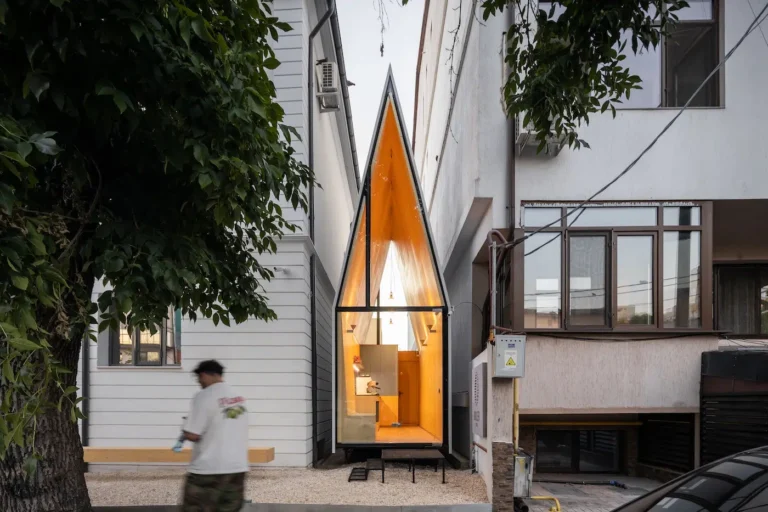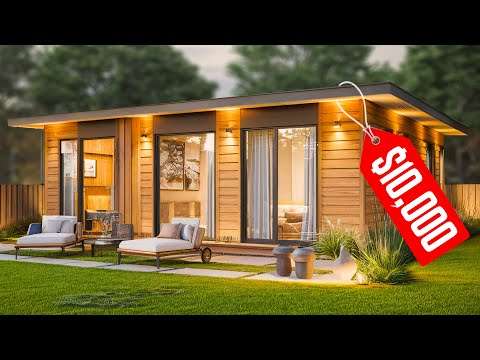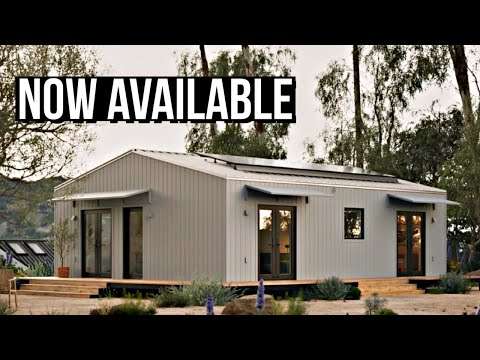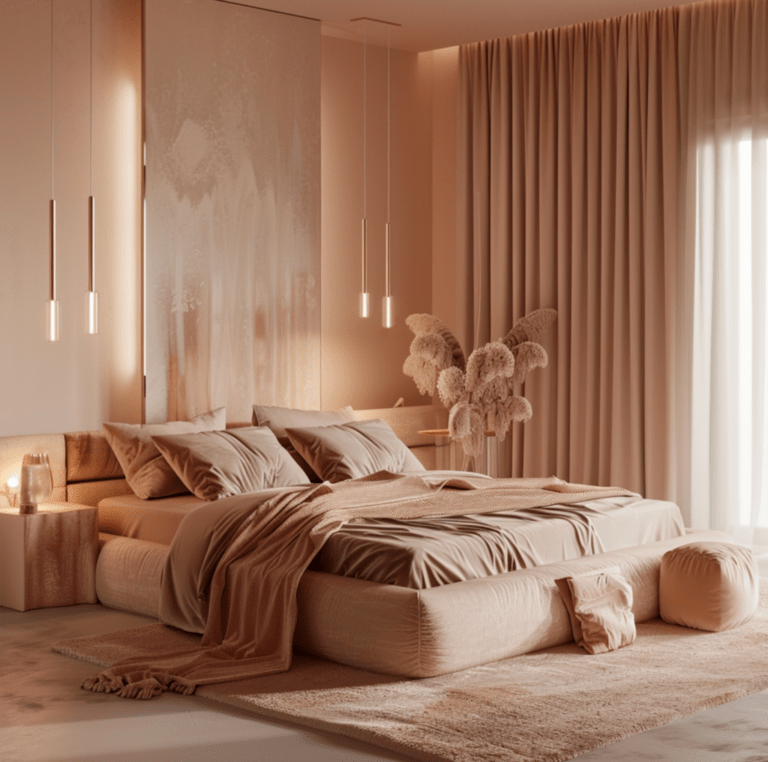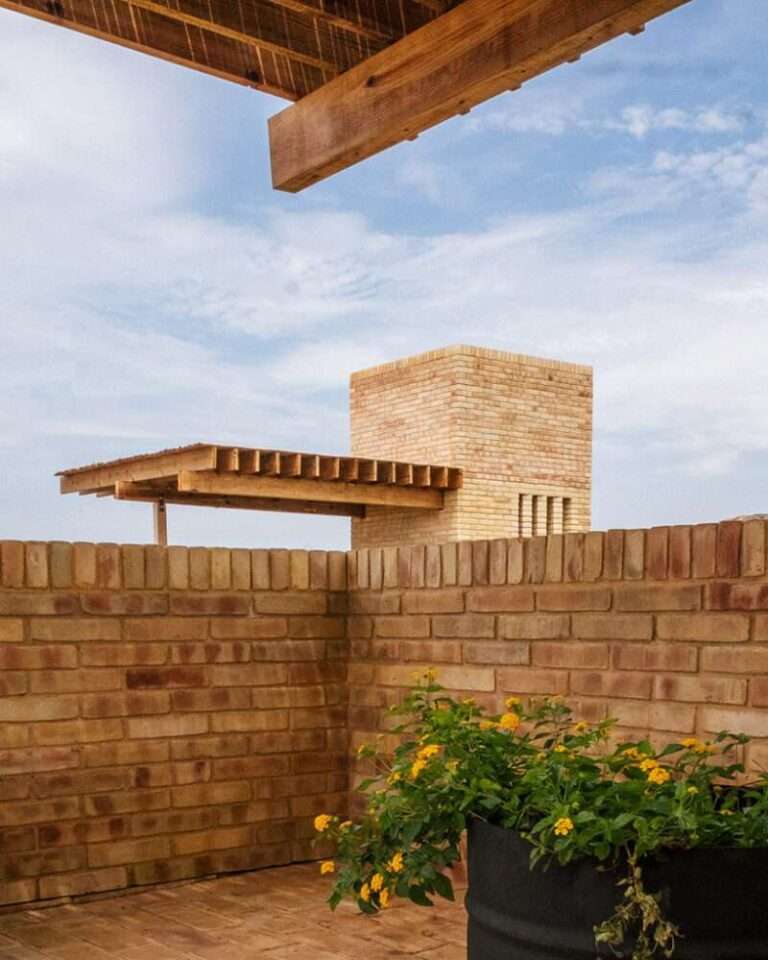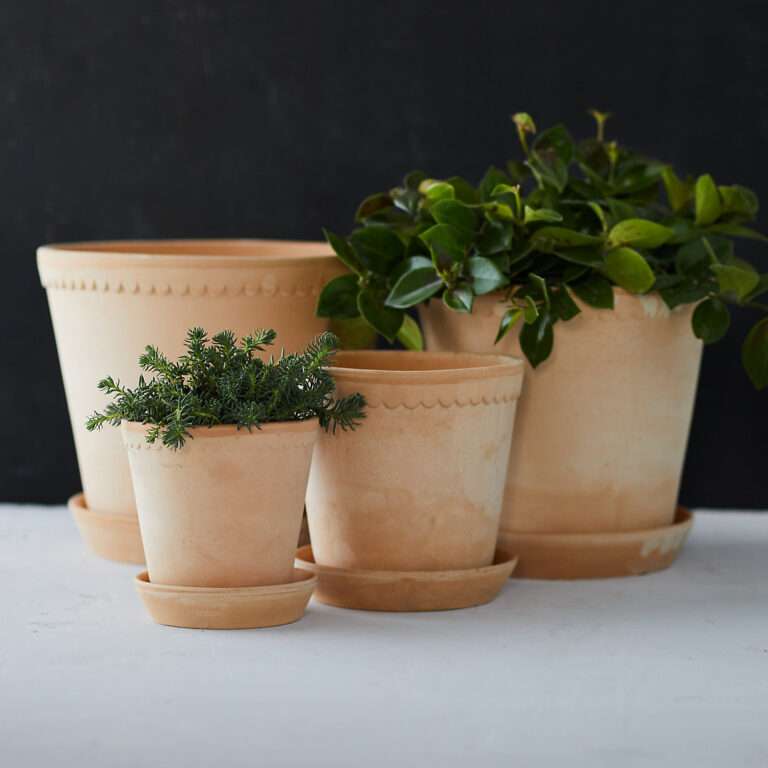The philosophical intent of The Folly by Chesire Architects is to provide a gentle cabin retreat for its owners. As such, the architect is concerned about employing a built interior quality of calm and repose to the cabin. Positioned on a clifftop in Takapuna, New Zealand, The Folly is an end piece of a project that started near thirty years prior and is a single house with steps down the clifftop. To complement the original luxurious home, the architect built The Folly on the far northern edge of the landscape to embrace the sun and views. With each Chesire Architects projects there is an element of managed revelation, so that when one arrives there is hint of something before the reveal is slowly rolled out.
Designed to look like a modern yet rusted shed, The Folly can be seen across the landscape from the main home, yet it isn’t until approach that its charm is revealed. Following the house tour through the entry, there is a realisation that there is a level of consideration and luxury provided through the choice of materials, decor and interior design. The cabin appears to look casual and informal yet, through its meticulously planned interior design and architecture, a certain level of luxurious indulgence is felt. The floor plan of the cabin is kept quite simple as the architect has built it to serve two functions. One half is the garden shed and the other is the retreat and guesthouse with kitchen. The inside of the home is rectangular in shape and everything, such as the kitchen, lounge space and two-way fireplace, is visible upon entrance. Outside is an open-air terrace where one can sit and look out to the ocean.
One of more critical elements of the home is to provide a place of repose and reflection. As such, the quality of the spaces that reflect this are important to the end design. Hinting at the humble qualities of the early mining cottages of the area, The Folly is made from purposely rusted corrugated iron to imply that the building has been there for a very long time. Referencing the rust through the colour of timber used on the exterior contributes to the feeling of calm and quietness of the building and is employed to inspire people to slow down once they enter. A consistency is also employed with the same materials used across walls, floors and the roof of the cabin.
Though described as an extraordinary endeavour by a large number of people by Pip Chesire, the design of The Folly was guided by Pip’s sketches and watercolours and brought to life by the project team in Cheshire Architects office, the contractors on site and the interior designers from the United States. Positioned on the edge of clifftop, The Folly opens its cabin doors and encourages its guests to sit back and appreciate their surrounds while embracing the upmost relaxation.
00:00 – Introduction to The Secluded Cabin
00:44 – A 25-year Long Process
01:35 – Incorporating Considered Luxury
02:22 – The Cabin Floor Plan
03:17 – A Warm Material Palette
04:30 – The Collaborative Process
05:11 – Inspired by Personal Memories
For more from The Local Project:
Instagram – https://www.instagram.com/thelocalproject/
Website – https://thelocalproject.com.au/
LinkedIn – https://www.linkedin.com/company/the-local-project-publication/
Print Publication – https://thelocalproject.com.au/publication/
Hardcover Book – https://thelocalproject.com.au/book/
The Local Project Marketplace – https://thelocalproject.com.au/marketplace/
For more from The Local Production:
Instagram – https://www.instagram.com/thelocalproduction_/
Website – https://thelocalproduction.com.au/
LinkedIn – https://www.linkedin.com/company/thelocalproduction/
To subscribe to The Local Project’s tri-annual print publication see here – https://thelocalproject.com.au/subscribe/
Photography by Sam Hartnett.
Architecture by Cheshire Architects.
Interior design by Lucas Interior Associates.
Build by Clifftop Services.
Landscape design by Urbanite Damian Wendleborn.
Filmed and edited by O&Co. Homes.
Production by The Local Production.
Location: Takapuna, New Zealand
The Local Project acknowledges Māori as tangata whenua and Treaty of Waitangi partners in Aotearoa New Zealand. We recognise the importance of Indigenous peoples in the identity of our respective countries and continuing connections to Country and community. We pay our respect to Elders, past and present and extend that respect to all Indigenous people of these lands.
#Cabin #NewZealand #TheLocal Project
